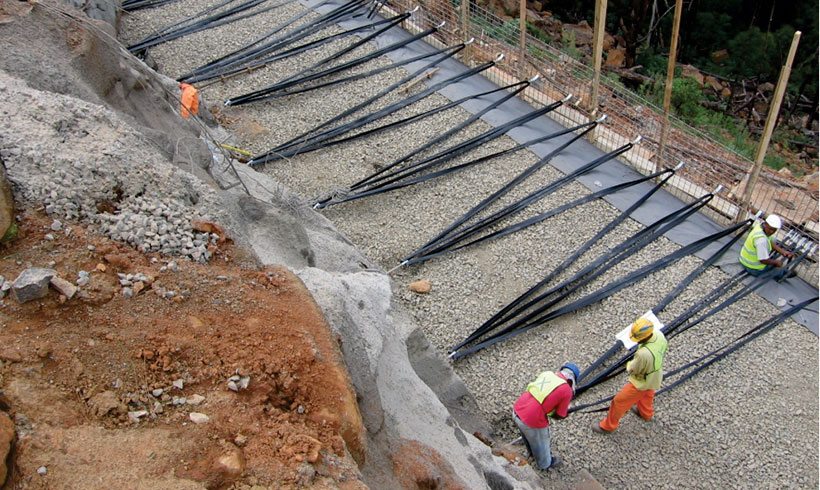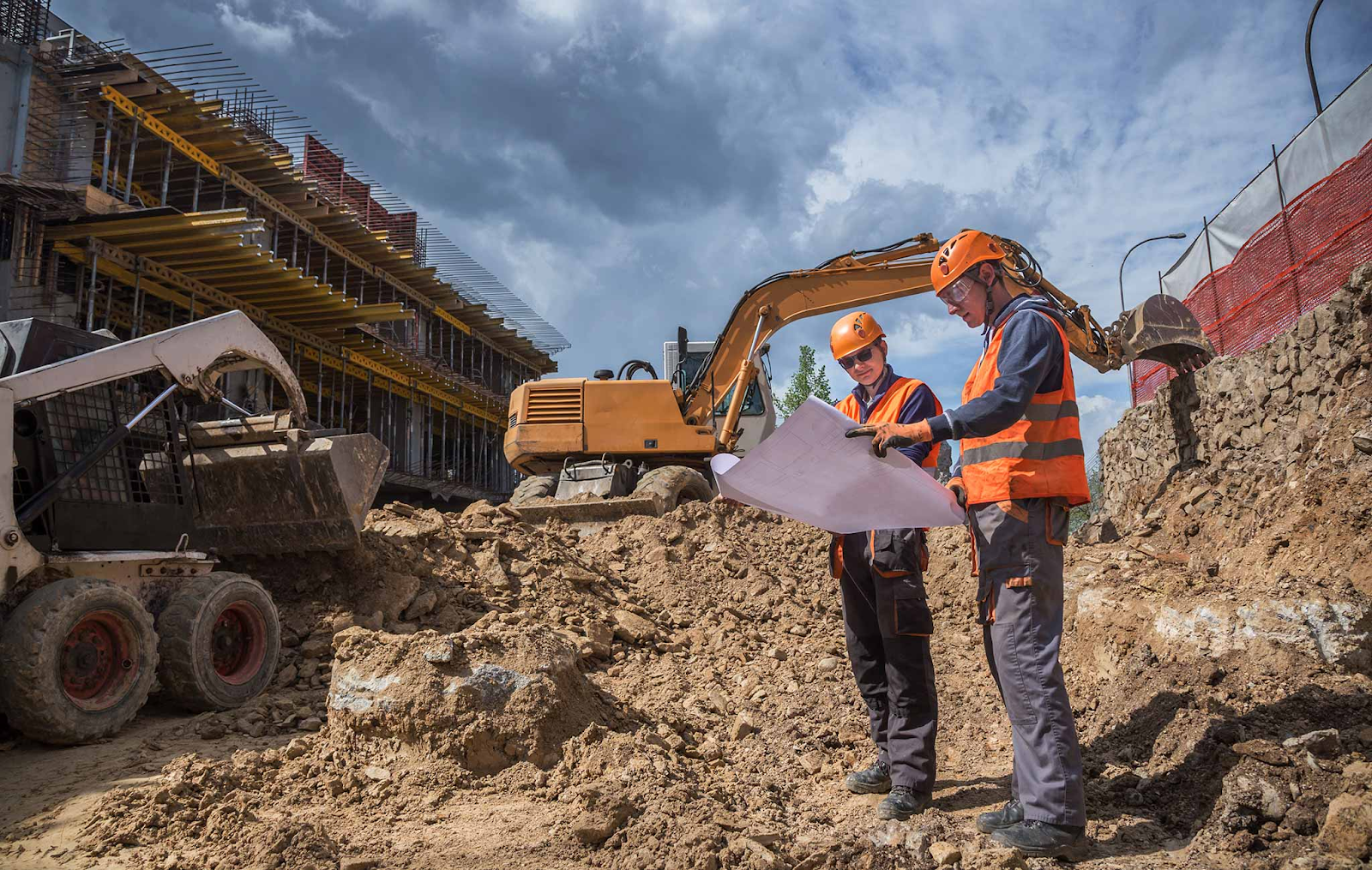About Geotechnical Engineering For Construction Projects
The Only Guide to Geotechnical Engineering For Construction Projects
Table of ContentsGetting The Geotechnical Engineering For Construction Projects To WorkThe Single Strategy To Use For Geotechnical Engineering For Construction ProjectsEverything about Geotechnical Engineering For Construction ProjectsThe Ultimate Guide To Geotechnical Engineering For Construction ProjectsThe smart Trick of Geotechnical Engineering For Construction Projects That Nobody is Talking About
Throughout the investigation, it is crucial to drill at the called for depth and the needed number of openings as per the suggestion of the Canadian Structure Layout standard. Sometimes, the proprietor might conserve some Geotechnical Examination expense but wind up spending even more than the expected during the building and construction expense.The duties of the geotechnical expert include supplying material screening for building support. Geotechnical Engineering for Construction Projects. Geotechnical designers analyse all the field examination records to guarantee that construction is taking place as per the job requirements. During construction, a confirmatory test for soil compaction is done on-site to make certain that no future negotiation occurs
After the concrete is put -7 days and 28 days- examinations are performed on concrete examples collected from the website to make certain that the concrete poured satisfies the layout criterion. Asphalt core is taken after the Asphalt is laid and compressed to validate that it meets the style criterion. All research laboratory test records are analysed by the Geotechnical Engineer to make sure that it satisfies the project spec.
What Does Geotechnical Engineering For Construction Projects Do?

Geotechnical design plays a vital duty in guaranteeing the stability of construction jobs. Find out exactly how it affects style and total job success. Geotechnical engineering is a vital branch of civil design that concentrates on comprehending the behavior of planet products, such as dirt and rock. It includes evaluating subsurface conditions to ensure that a structure's foundation or facilities is steady and safe.

For a reliable structure and a smooth construction procedure, trust fund to offer the knowledge you require. Call to obtain specialist recommendations and geotechnical services customized to your next task.
More About Geotechnical Engineering For Construction Projects
When embarking on a land growth task, recognizing the ground below your feet is as important as the structures you intend to build over it. Our Geotechnical Design team evaluate the ground, ensuring it is ideal for the proposed growth while offering you with the details called for to meet your project goals.
Geotechnical Design considers the formation of the ground, as it is the foundation for all tasks. Where frameworks require to be designed with regard to the ground problems; ground conditions (e.g., soft ground) may require strengthening relying on the size of the intended framework. Prior to building, you need to find out about the groundwater, soil structure, and liquefaction probability of your land.
For sites that are not connected on the regional authority framework added website investigations would certainly be required to provide technical inputs for on-site stormwater and wastewater. We have experienced Geotechnical Engineers based in each office, supporting your geotechnical needs across the country. Reach out to us to review exactly how we can support your following job.
These records are customized to meet the particular demands of a job and consist of web link layout specifications and guidance for the building and construction of an array of synthetic structures. Along with supplying working as a consultant services covering locations such as slope security and load-bearing abilities for different products, these engineers undertake research and growth activities to improve methodologies, tools, materials understanding and evaluation covering whole lifecycles.
The 3-Minute Rule for Geotechnical Engineering For Construction Projects

Nonetheless, prices of pay typically raise as your knowledge and skills expand, with guidelines indicating a graduate starting wage of between 18,000 and 28,000 per year in the UK. This increases to 26,000 to 36,000 with a couple of years of experience and after that getting to 40,000 to 60,000+ for elderly, chartered or master engineers.
With the ideal application it is possible to master the occupation and gain entrance to a challenging yet fulfilling and essential occupation. A geologist would need to retrain to become a geotechnical designer, although there is plenty of cross-over in between the two careers, which might make this easier - Geotechnical Engineering for Construction Projects. Geologists require to have an news understanding of dirts, rocks and other products from a clinical perspective, while geotechnical engineers tale their knowledge of issues such as dirt and rock technician, geophysics and hydrology and use them to design and environmental tasks
When beginning, these engineers will often tend to work on much less intricate projects, developing expertise and experience ready for more difficult job later on. Geotechnical engineers have a tendency to be experts in particular locations as they expand in experience, concentrating on particular facilities such as trains, roads or water. These engineers additionally collaborate with renewable power, offshore and onshore oil and gas, nuclear power, and more.
The Of Geotechnical Engineering For Construction Projects
The moment taken to come to be a geotechnical engineer depends on where you are based, where you research study and what degree of education and learning you intend to achieve before entering the work environment. Are you going to check out an apprenticeship, take an university level or service in the direction of a Master's or PhD? Nonetheless, generally-speaking it takes 3-4 years to reach the basic requirements to begin a job as a geotechnical engineer.
These operations make it possible for experts to assess a host of dirt technicians including weight, porosity, void-to-solid bit ratio, permeability, compressibility, optimum shear stamina, birthing ability and contortions. If the framework calls for a deep foundation, engineers will certainly make use of a cone penetration test to approximate the amount of skin and end bearing resistance in the subsurface.
When assessing an incline's balance of shear tension and shear toughness, or its capability to endure and go through movement, rotational slides and translational slides are generally taken into consideration. Rotational slides fail along a rounded surface, with translational slides happening on a planar surface a knockout post area. An expert's objective is to establish the conditions at which a slope failing might occur.
Often, findings suggest that a website's dirt ought to be treated to enhance its shear stamina, rigidity and permeability before design and construction. When it comes time to lay out structure plans, specialists are progressively concentrated on sustainability, even more specifically just how to minimize a structure's carbon footprint. One tactic has actually been to change 20 percent of a foundation's concrete with fly ash, a waste product from coal fire power plants.